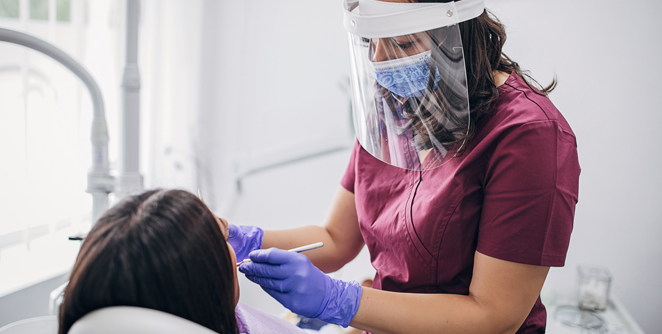Tooth Extractions 101

While it’s most common for teens and adults to have their wisdom teeth removed, other factors can make extraction of a permanent tooth necessary. Know what to expect during and after a tooth extraction procedure for your peace of mind.
Causes
Yes, permanent teeth are meant to stay with you throughout your life. However, it can become necessary to have them removed due to several factors, including:
- Tooth decay. Severe cavities may not be improved by antibiotics or a root canal. In that case, your dentist may recommend a tooth extraction.
- Gum disease. If advanced, severe infection to teeth and surrounding tissue and bones may result in complete removal of the infected tooth.
- Risk of infection. Those experiencing a compromised immune system can benefit from a tooth extraction if the risk of infection is enough to cause concern.
- Crowded mouth. If there’s not enough room in the mouth for erupting teeth to properly align, your dentist may recommend pulling the incoming tooth.
What to expect
Tooth extractions are often an outpatient procedure performed by a dentist or oral surgeon. There are two main types of tooth extractions:
- Simple extractions require only a local anesthetic to be applied around the tooth to minimize discomfort during the procedure, so you’ll feel only pressure, not pain. Like its name, a visible tooth is simply removed intact.
- Surgical extractions generally require both local and intravenous anesthesia to keep you calm and comfortable during the procedure. To fully remove the impacted tooth, your dentist or oral surgeon may cut a small incision into the gums or teeth or remove the bone surrounding the tooth.
Risks
Tooth extractions are a common procedure with minimal risks involved, but it’s important to know when you should call your dentist. Contact your dentist if you are experiencing any of these symptoms:
- Coughing
- Nausea or vomiting
- Chest pain or shortness of breath
- Severe fever and chills
- Bleeding that lasts for more than 12 hours
- Swelling and redness near the tooth extraction site
Recovery
To help ensure the tooth extraction site heals properly, here’s a few steps you can take during your recovery.
Immediately following the procedure:
- Apply an ice pack directly to your cheek to reduce swelling.
- Gently bite down on a gauze pad to help a blood clot naturally form and remove after three to four hours.
During the first 24 hours:
- Avoid strenuous activity.
- Do not use a straw to drink.
- Do not swish liquids or rinse your mouth.
- Eat soft foods, such as yogurt, pudding and applesauce.
After 24 hours:
- Take pain medications as prescribed by your dentist or oral surgeon.
- Slowly reintroduce foods to your diet.
Your dentist will provide specific instructions that you should follow after your tooth extraction. The healing period generally lasts one to two weeks, so be gentle while brushing and flossing your teeth and when eating. As you recover, new bone and gum tissue will form within the gap.
It’s also normal for the remaining teeth to shift following a tooth extraction. However, if it becomes difficult to chew while eating, your dentist may recommend an implant, fixed bridge or denture.
If you experience pain that doesn’t go away after several days or show signs of an infection — including fever, pain and drainage from the incision — make an appointment to see your dentist as soon as possible.


Add comment